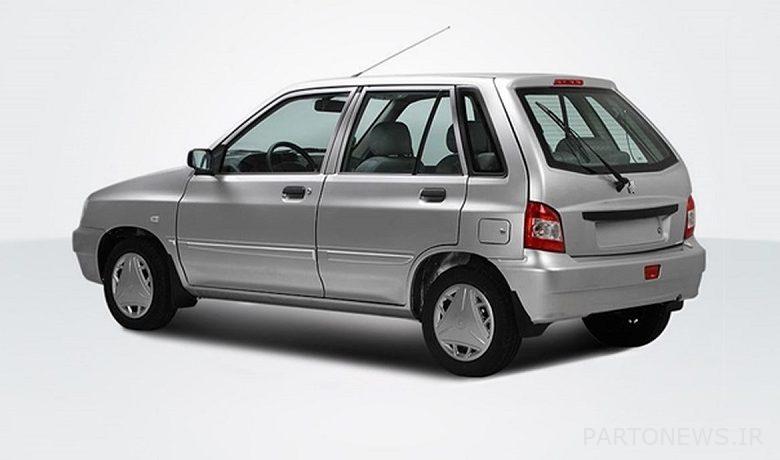How many months is a Pride equivalent to a salary?

According to Tejarat News, “car prices are decreasing” is the statement made by Seyed Reza Fatemi Amin, Minister of Industry, Mines and Trade, on the first day of November, when he visited the Tara Automatic production line. However, the car market has witnessed an upward trend in prices since the beginning of November. The price of Pride 111 has reached 168 million Tomans in a recent week with a growth of 3 million Tomans.
Assuming that the average salary of workers (Ministry of Labor) is about four million and 300 thousand tomans, the price of a 168 million Pride is about 39 times the monthly salary of workers. This means that a worker will be able to buy a Pride 111 after this period if he does not use his monthly salary and ignores the necessary living expenses for 39 months, along with keeping the price of the car constant and not increasing its price.
Also, the current price of Saina is 44 times higher than workers’ wages, Quick automatic 61 times, Brilliance H330 automatic 103 times, Peugeot 206 Type 2 about 60 times, Peugeot 405SLX about 66 times, Peugeot Pars LX about 75 times, Denaplus Turbo 102 times, Haima S7 about 175 times. Arezzo 6 Turbo 191 times and Jack T8 228 times the monthly salary of workers.
Wait 16 years to buy Pride
According to statistics published by the Statistics Center of Iran, the average annual income of a rural household in 1399 was about 42 million Tomans, of which 34 million was spent on living expenses and the average annual income of an urban household was estimated at 75 million Tomans, of which 62 million. The average annual consumption cost was for these households.
According to published statistics, in 70 to 80% of Iranian households, the difference between income and annual consumption costs reaches 10 million Tomans. This number tells us that if a family wants to buy a Pride with their surplus income, they have to wait 16 years without any price increase.
However, only 20 to 30 percent of households, including high-income deciles, can overcome inflation along with the market. At the top of the most lucrative fields in Iran, the surgeon is among the first ranks. The average income of a surgeon can reach 100 million Tomans per month. At market price) or has 6 Saina cars (162 million each at free market price) or two Ranapluses with one Quick Drive (275 million Ranaplus and 173 million Quick Drive).
Lawyers and notaries can have an average annual income of one billion tomans, with a monthly deduction of 20 million tomans of consumption costs, their annual income surplus is 760 million tomans, which can be used to buy two Denaplas type one (each with a market price of 378 million tomans. Tomans) or two Peugeot Pars automatic (each with a market price of 390 million) was imagined.
The monthly income of the MPs is between 31 to 34 million Tomans, which with the monthly expenses of 20 million Tomans, they have the power to buy an annual Ranaplus (at a price of 180 million in the market) or a Quickener (at a price of 173 million in the market). Other high-paying jobs such as business, information technology, and همان, like the top three groups, can afford to buy at least one car a year.
The lottery was also a platform for brokers to jump
The pre-purchase was very well received by people who could not afford to buy a car from the market or employees and retirees, and the special registration of Iran-Khodro this month increased from 390,000 codes on the first day to a significant number of 1.2 million codes on the fourth day, but The large difference in factory and market prices opened the door for speculators to draw lots.
At the beginning of the plan, Saeed Motameni, president of the Automobile Exhibitors Union, was warned of the presence of dealers. “The market needs more cars along with supervision,” Motameni said, referring to car lotteries. “Until the market margin reaches five to 10 percent, the car market will not return to normal and dealers will disrupt the market again.”
In the registration period of the previous period Iran-Khodro (August 1400) out of 884,329 registrations, only 15,000 people won the lottery, which means that less than two percent of the participants in the lottery were accepted.
However, a significant part of the registrations are brokers. Brokers and intermediaries in some deprived cities who did not have the money to buy a car, offered to register the car using a national card (subject to the conditions) and if the names of those people are chosen in the lottery, they will be given three to five million tomans. . In this way, the presence of dealers and their registration several times by buying other people’s national cards at a low price and reducing the chances of ordinary people winning again challenged the ease of buying a car.
Production of these cars is 43% less than planned
Last week, Minister of Silence Reza Fatemi Amin attended a meeting of the Industries and Mines Commission and requested a six-month opportunity to control the market. Fatemi Amin, who considered the elimination of lotteries to be effective in controlling the market by increasing domestic production and controlling foreign imports, promised to produce one million six hundred and six hundred thousand units a year. Fatemi Amin, in a program he presented to the parliament when he was introduced as the proposed minister, stated some of his medium-term goals in the automotive industry as follows:
1- Production increase to 1.6 million units in 1401 and 3 million units in 1404
2- Obligation to export cars (at least 30% in 1404) and reform of the tariff system
3- 20% reduction in the cost of the car by the end of 1401
4- Quality improvement of car production at levels of 3, 4 and 5 stars (20% increase in each level) until 1402, ban on the production of three-star cars down from 1403 onwards
5- In terms of five-year warranty for production cars from 1403 onwards
6- Production of at least two new domestic products every year
7- Operating the renovation project of the worn-out commercial heavy fleet (at least 30,000 units per year)
Minister Samat’s promise to increase production of 3 million units and increase car exports, after more than half a year and the situation of car production, has made this promise a dream come true.
For example, Iran Khodro Group predicts to build about 505,000 vehicles by the end of 1400. According to the automaker’s announcement statistics, the state-owned company produced nearly 206,000 vehicles in the first half of this year, which is equivalent to 41% of the announcement plan (9% less than the plan). Of course, this situation is very worrying for some products.
Iran Khodro, for example, had predicted that it would produce about 31,000 Taras a year, but in the first six months of the year, about seven percent of the program was operational. The company’s plan is to produce 14,000 Haima devices, of which 19% have been achieved so far. Production of Dena, Samand and Rana has been achieved by 36 to 37 percent and only three products are Peugeot 206, 405 and Peugeot Pars, the production rate of which is close to 50 percent and in accordance with the company’s production plan.
Source: فرهیختگان
Read the latest car news on the Tejarat News car news page.

